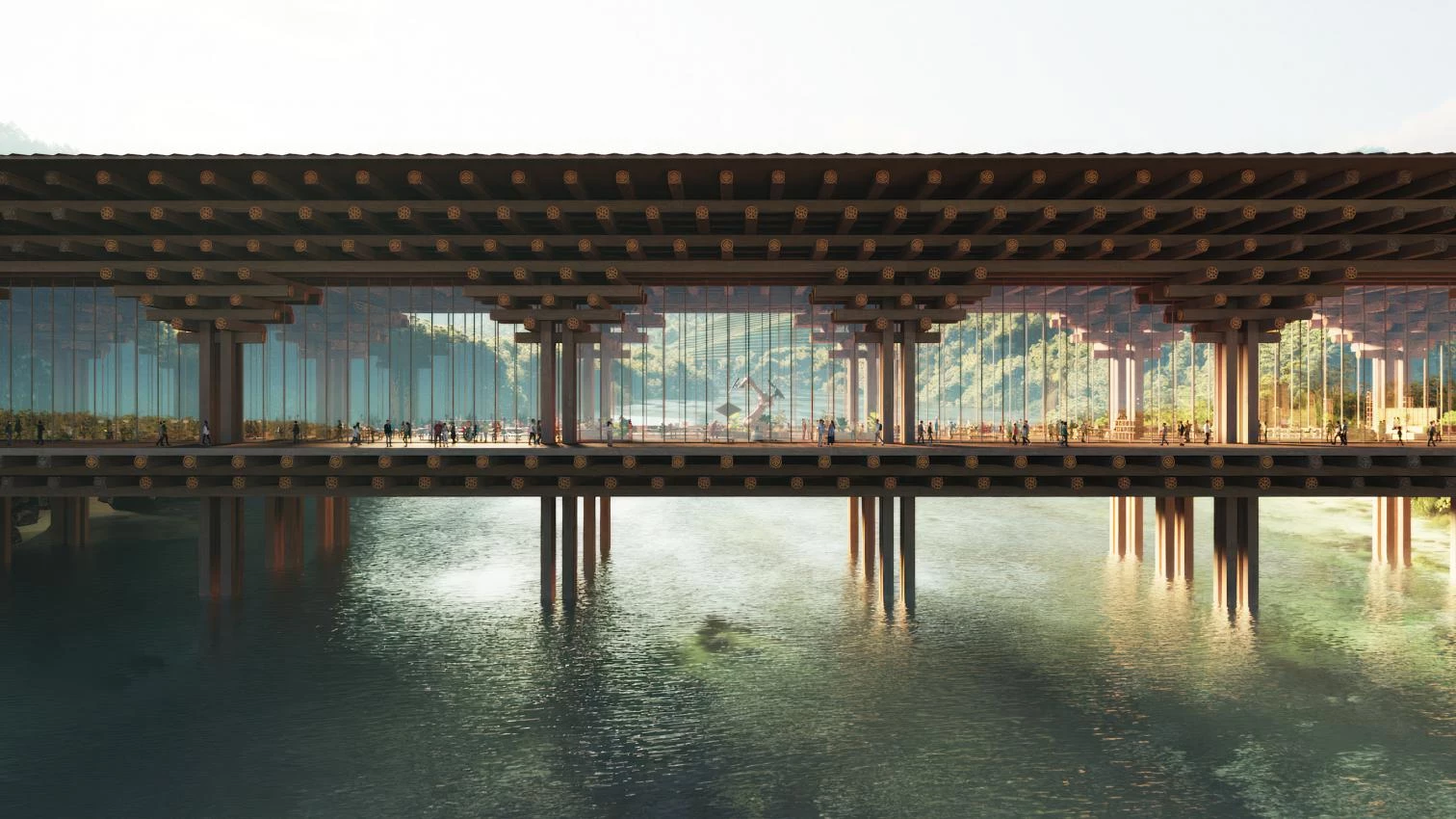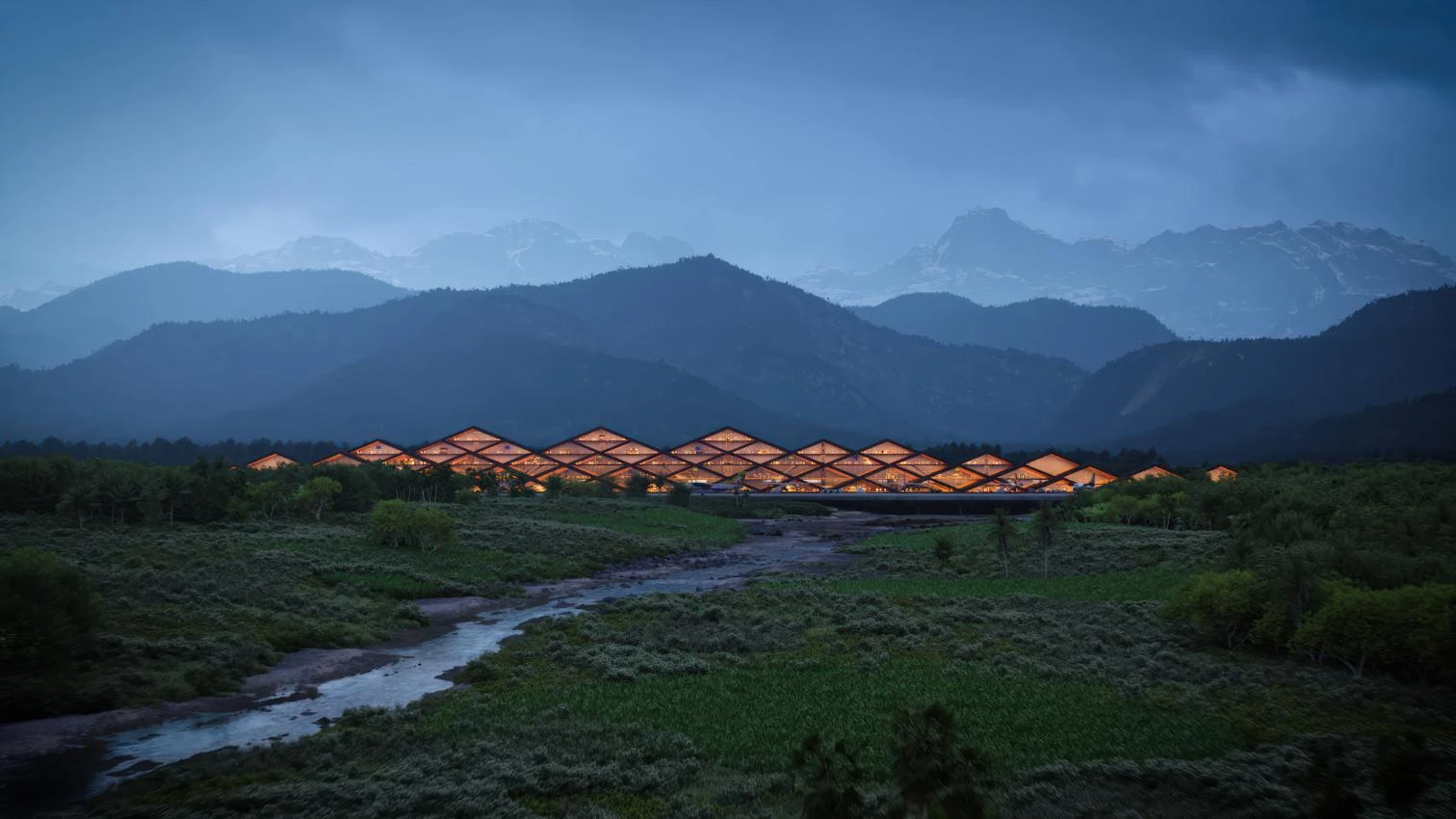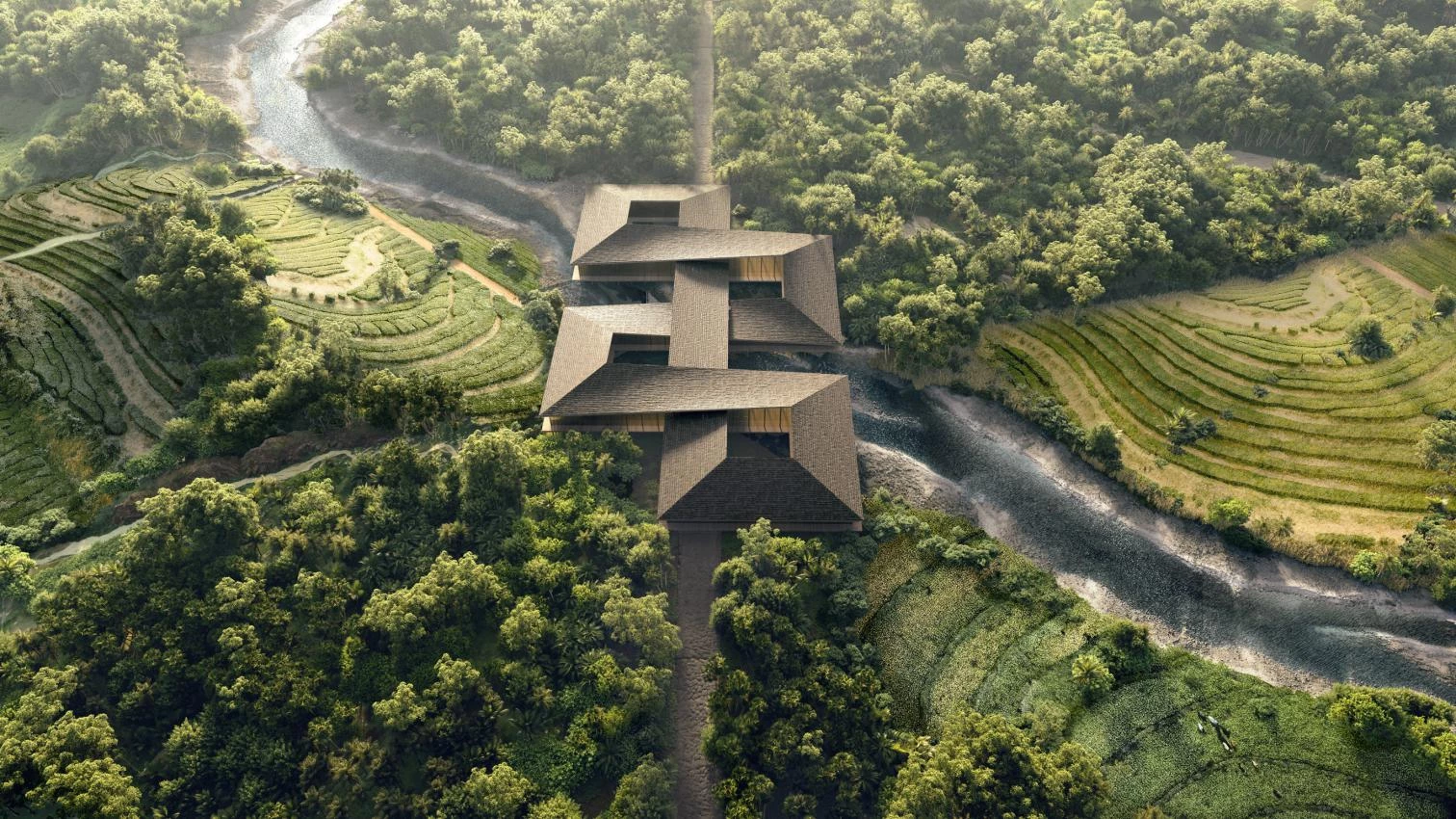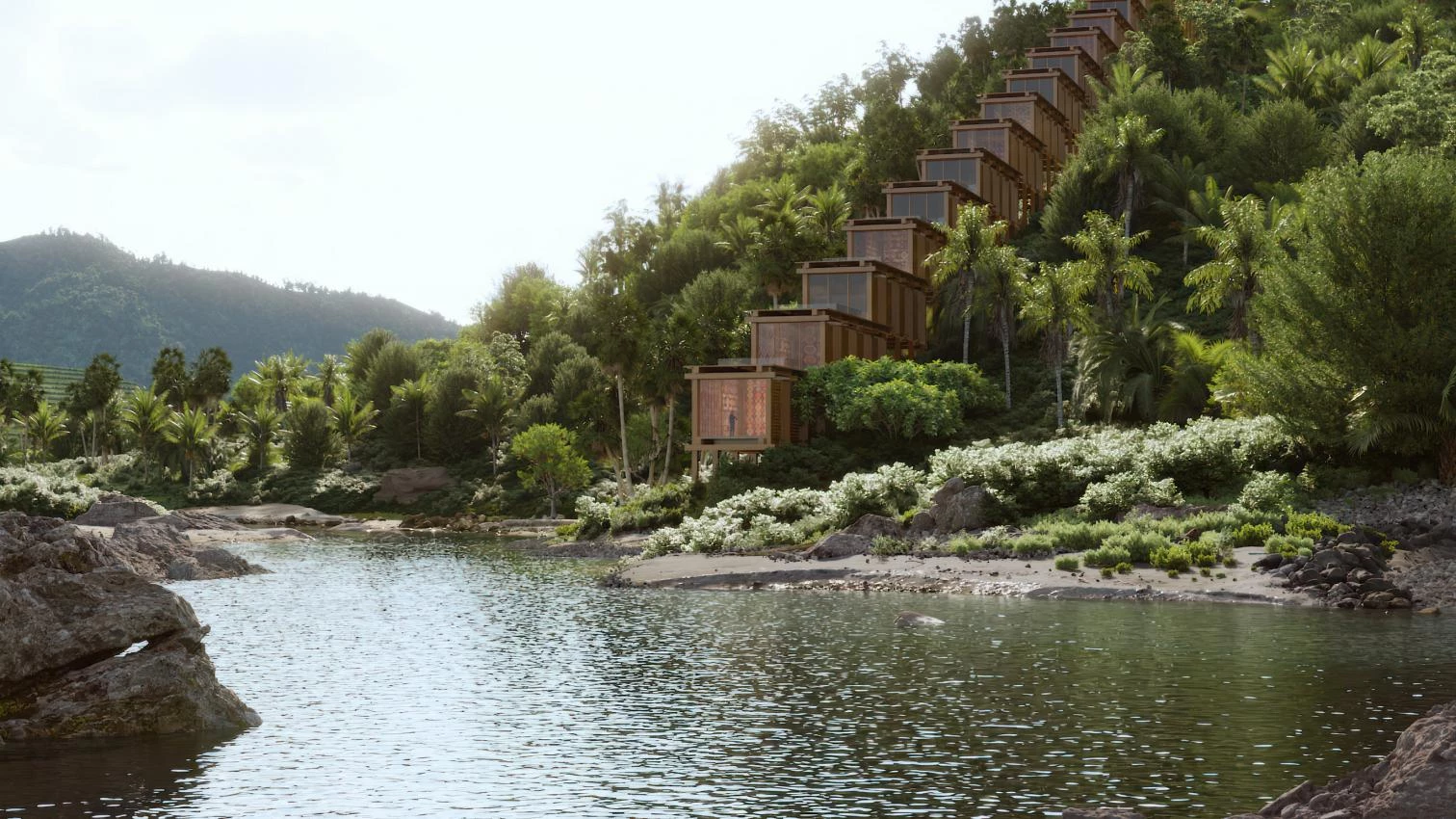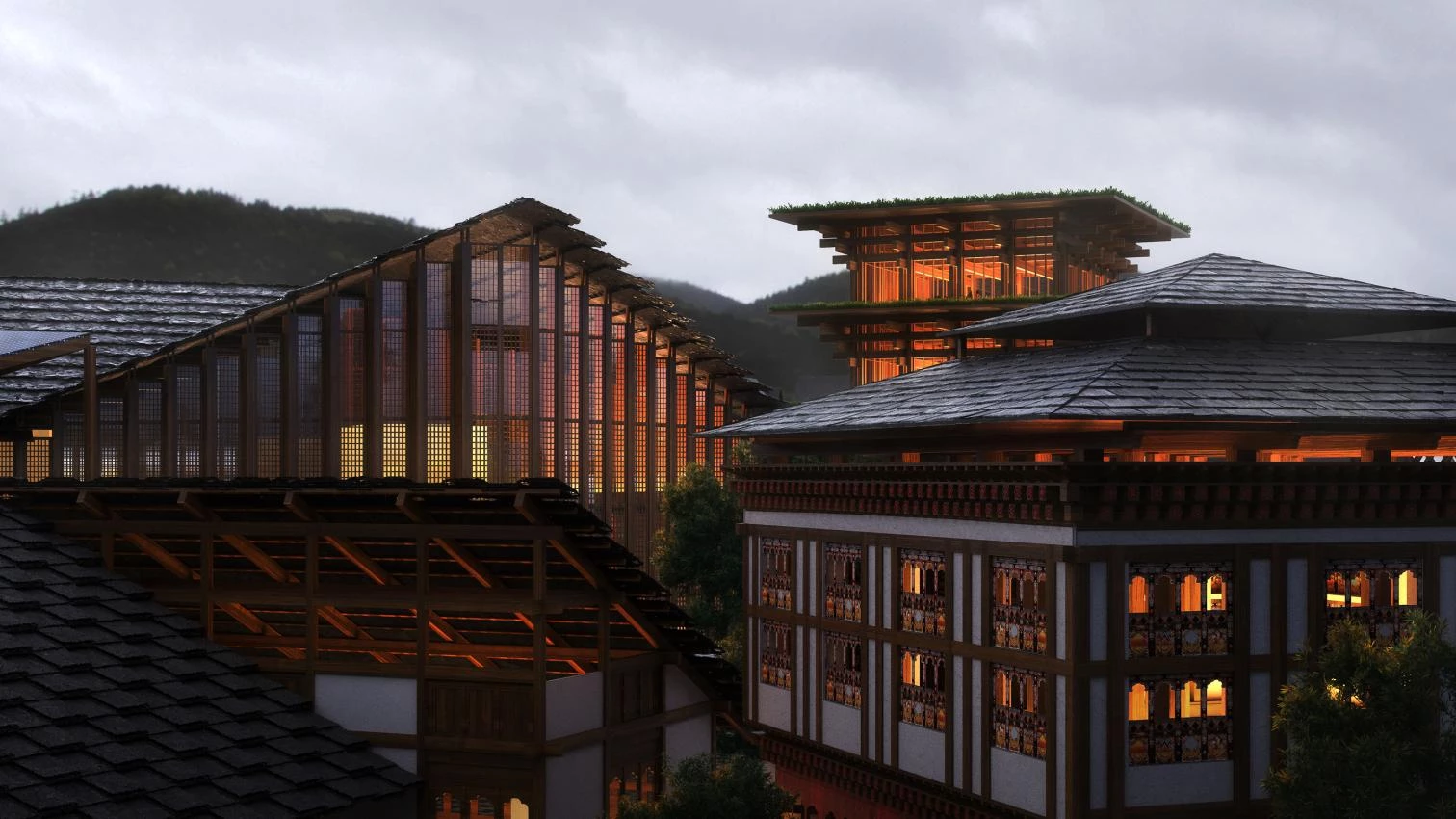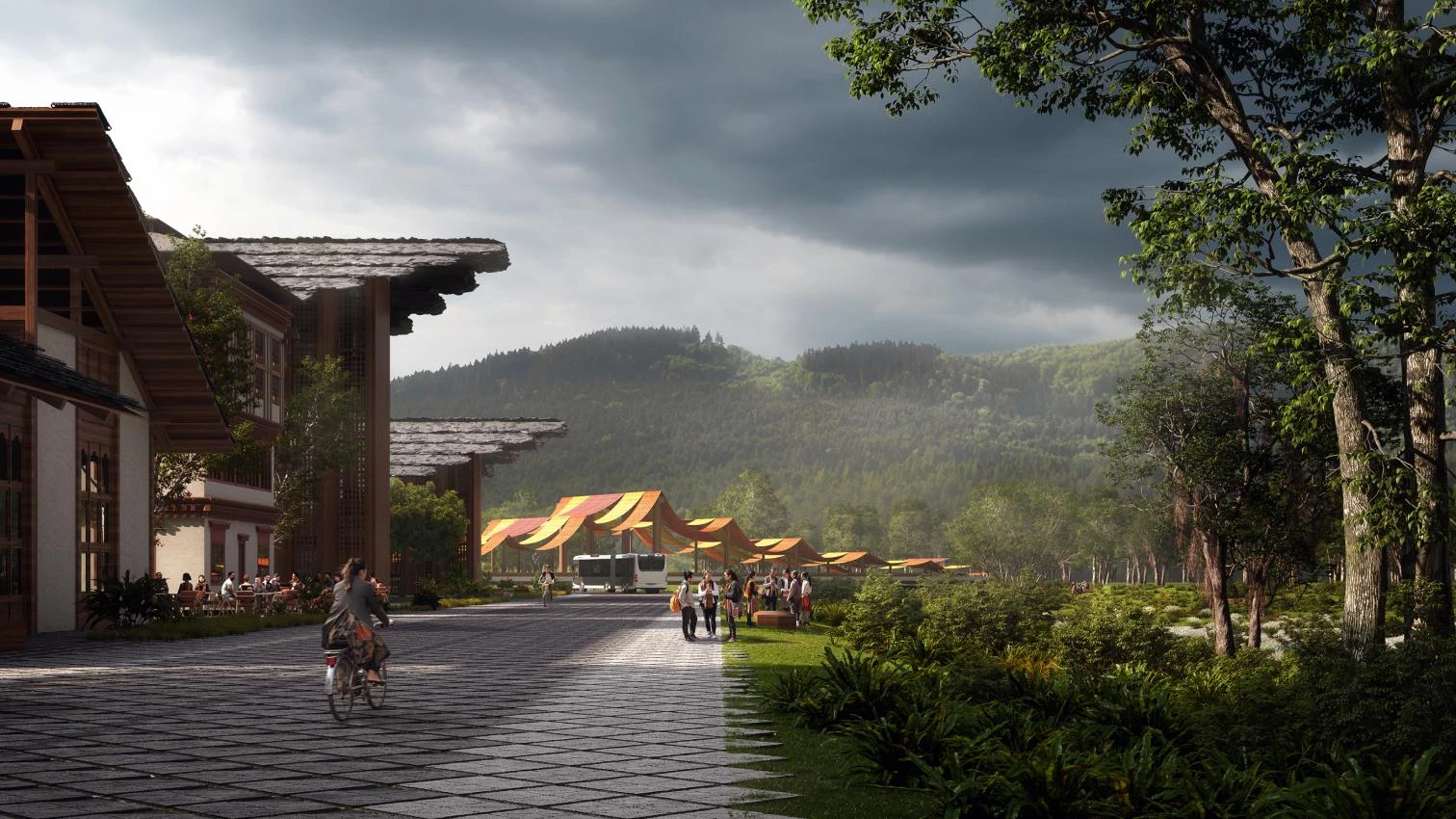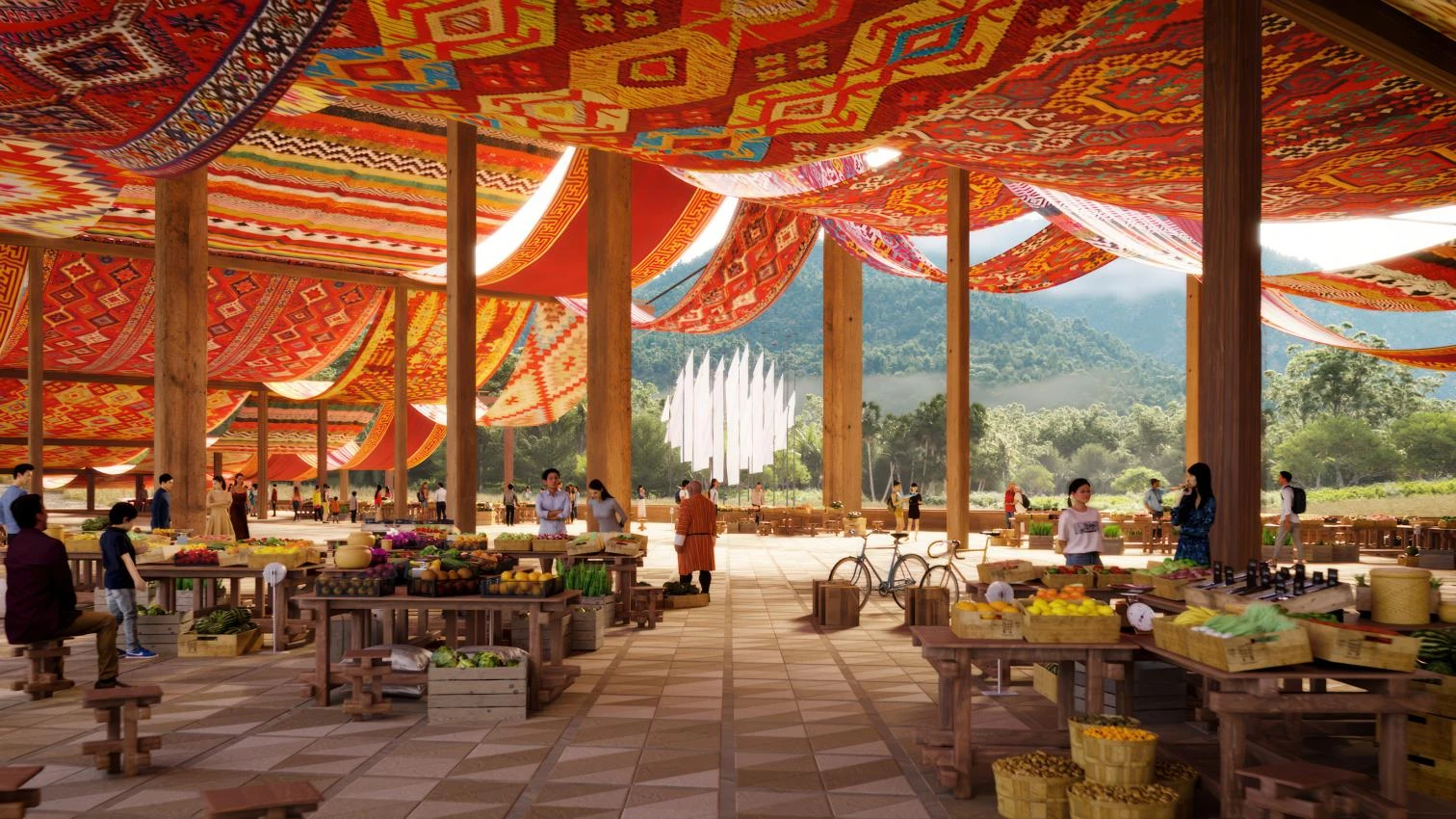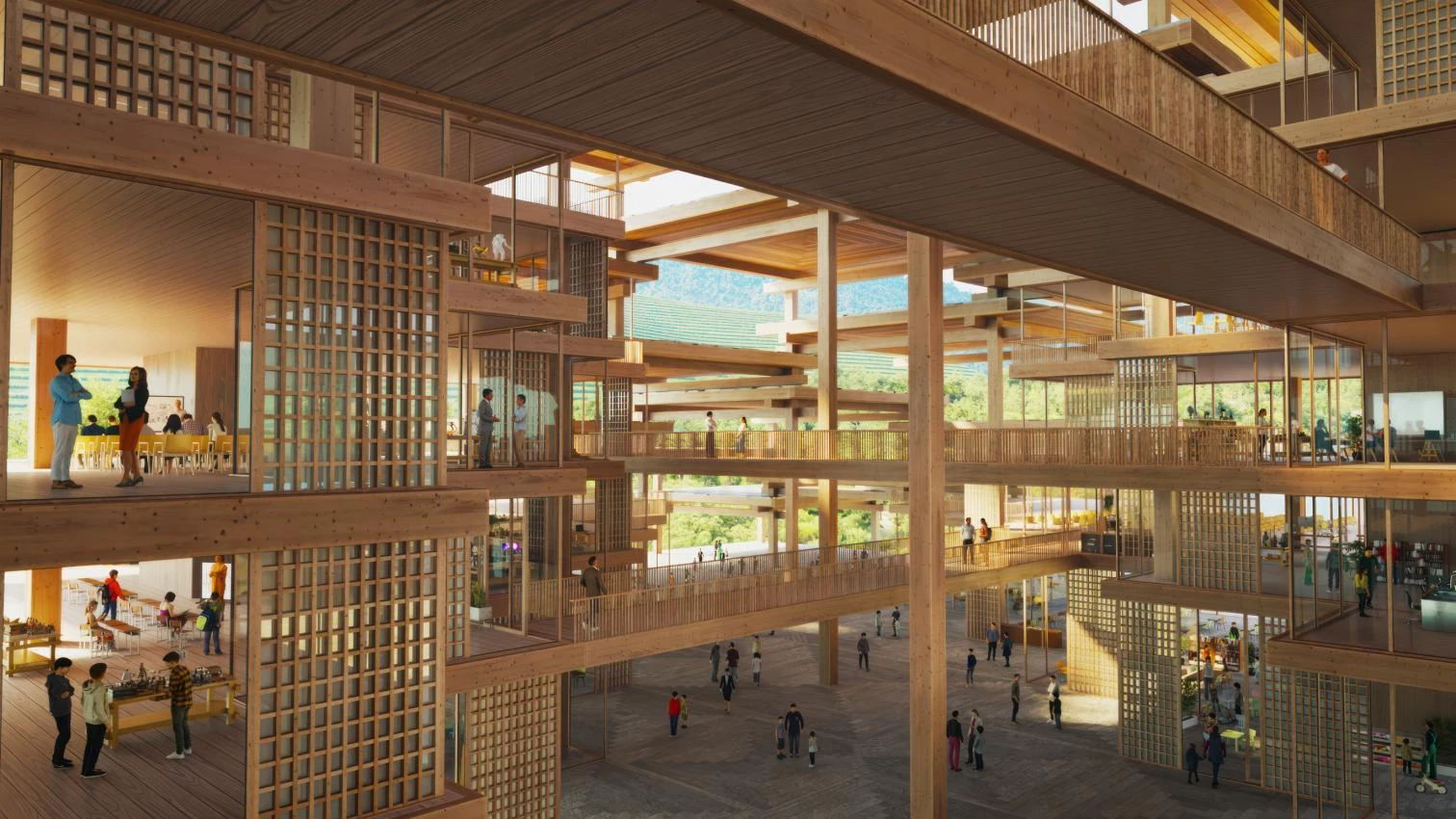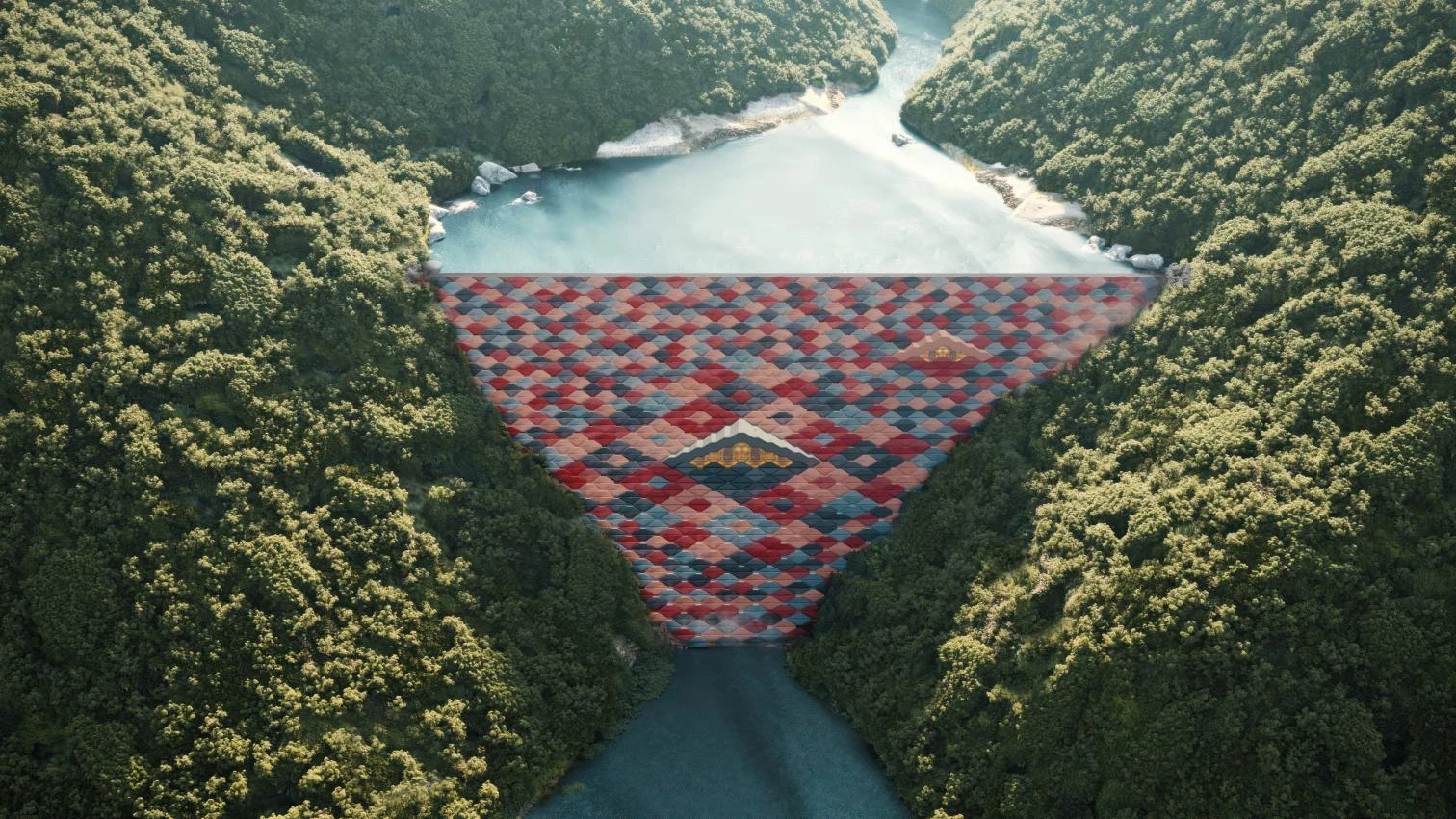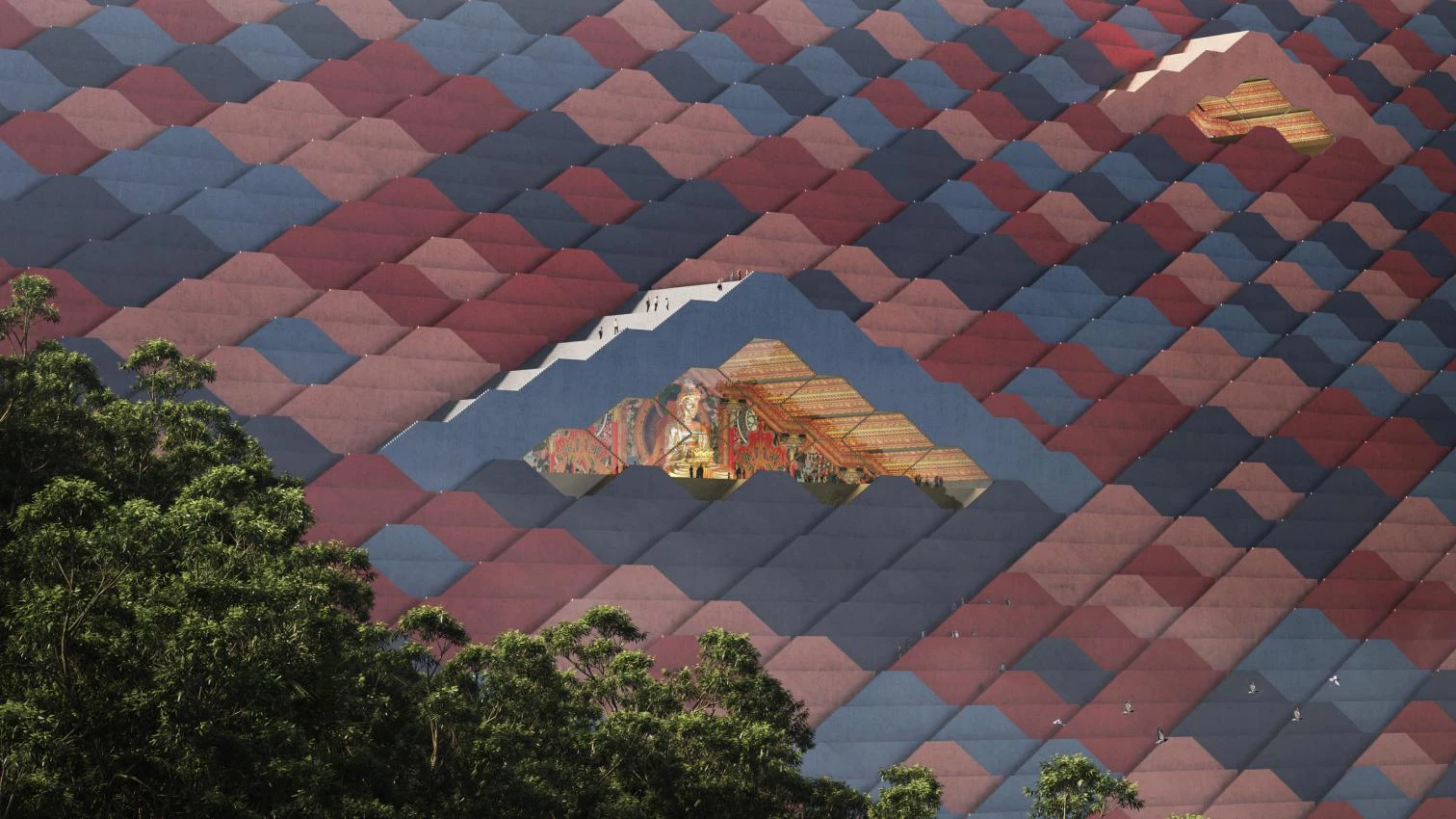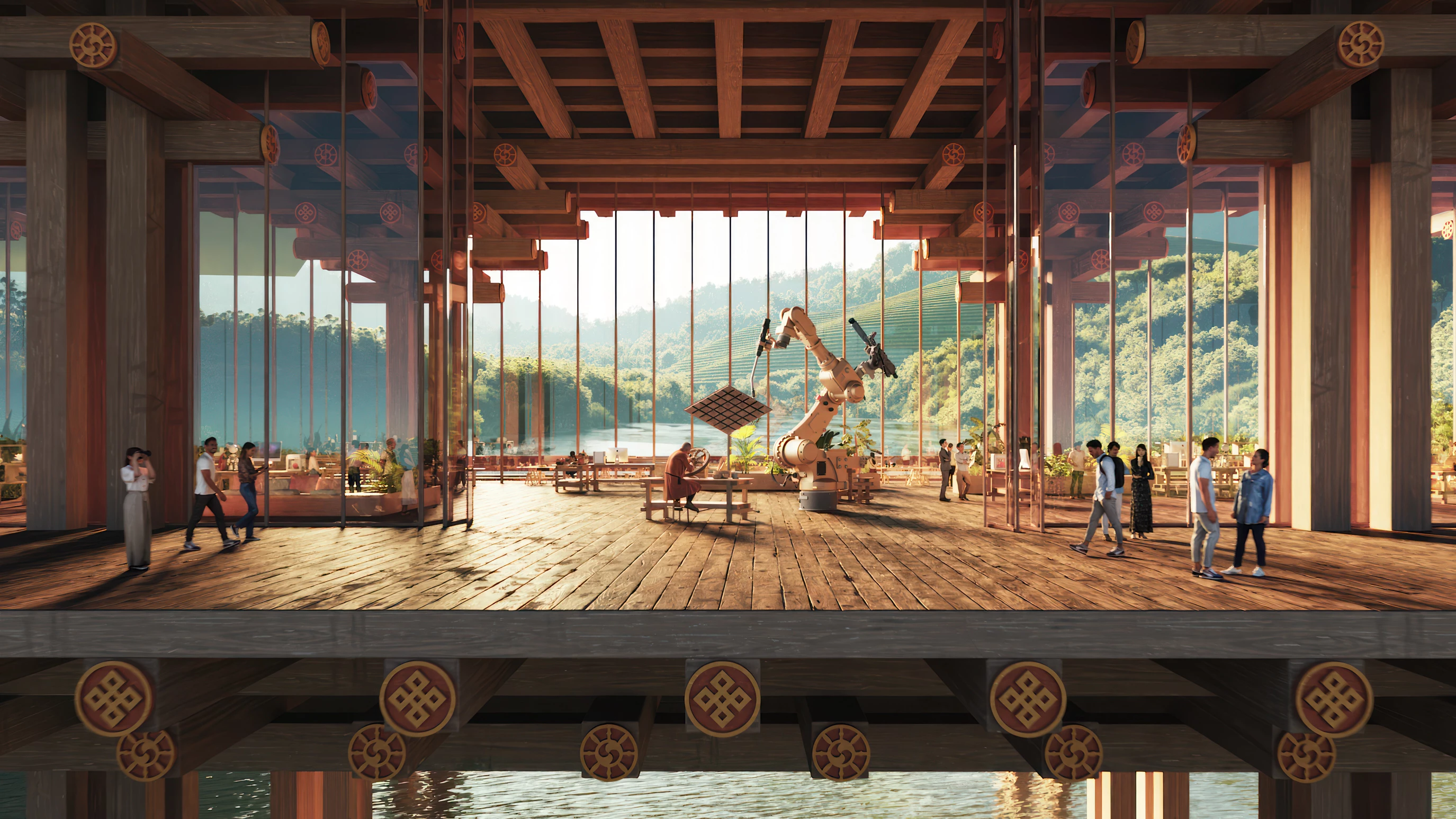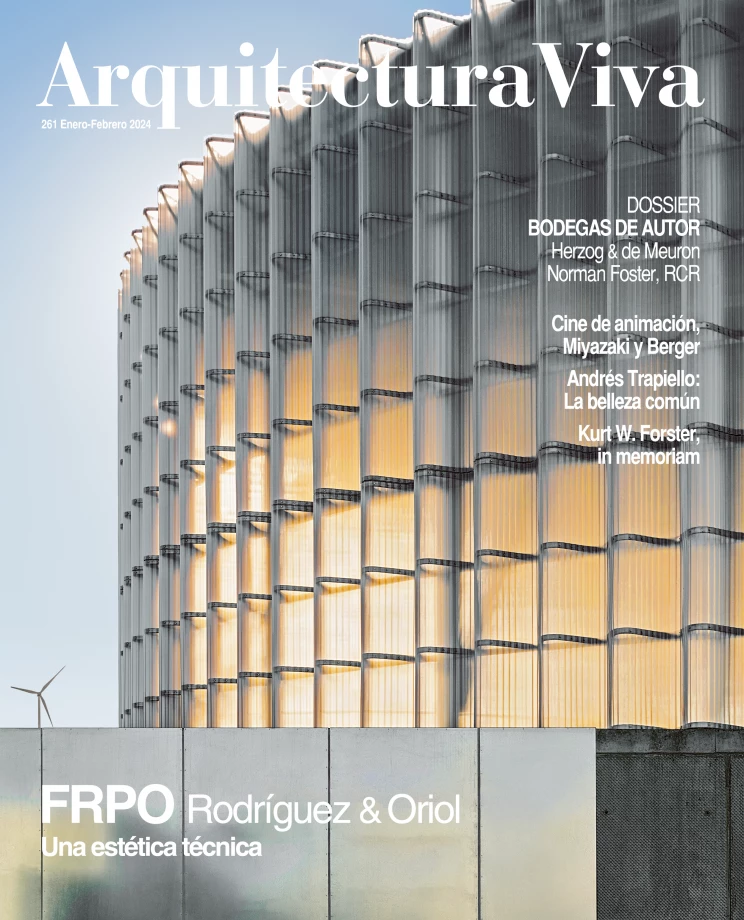Mindfulness City in Gelephu (Bhutan)
BIG Bjarke Ingels Group- Type Landscape architecture / Urban planning
- City Gelephu
- Country Bhutan
Drawn up by BIG in collaboration with Arup and Cistri, the ‘Mindfulness City’ masterplan for a new economic hub in Gelephu, on the Bhutan-India border, includes an airport and a hydroelectric plant incorporating a temple.
Covering 1,000 square kilometers, the project is based on the nine domains of the Gross National Happiness (GNH) index, which measure the quality of life of the population when applied to the peculiarities of the Bhutanese economy. The nine domains of the GNH are: psychological well-being, health, education, living standards, time-use, ecological diversity and resilience, good governance, cultural diversity and resilience, and community vitality.
Nestled between mountains, forests, and rivers, eleven neighborhoods form urban terraces that cascade down from the hills to the valley. They are designed on the principles of the Mandala, defined by a series of repeating typologies organized symmetrically around a central public space, where a gradual transition in density is created, from small buildings dispersed in the landscape to the north to larger footprints within an urban environment to the south.
The transport infrastructures are combined with civic and cultural facilities, creating a series of ‘inhabitable bridges’ which accommodate: the airport, A Vajrayana spiritual center, a healthcare center, a university, a greenhouse, a cultural center, a market adorned with Bhutanese textiles, and a hydroelectric dam with a stepped retaining wall that offers viewing points and also a temple.
Paddy fields along the rivers and tributaries will provide protection against flooding in the monsoon season. Streets paved with permeable material will ensure resilience by allowing stormwater to seep into the ground. The new buildings will be raised with local materials (wood, stone, bamboo) and draw on vernacular motifs.
